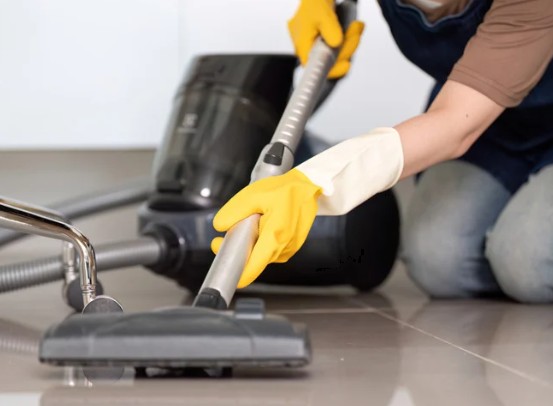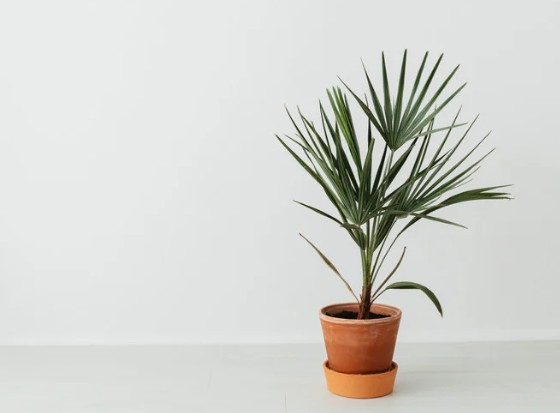The air inside your home might feel safe and clean, but it can actually harbor more pollutants than the air outdoors. From dust and pet dander to volatile chemicals and mold spores, indoor air contaminants can significantly impact your health and comfort. Poor air quality doesn’t just make your space feel stuffy—it can trigger allergies, worsen asthma, and cause fatigue or headaches.
Fortunately, improving your indoor air quality is easier than you might think. With a few smart adjustments and routine maintenance habits, you can ensure your home remains a fresh and healthy haven.
1. Keep It Clean: Dust, Vacuum, and Declutter
The simplest way to start improving your indoor air quality is with regular cleaning. Dust and dirt easily build up on surfaces, carpets, and furniture, trapping allergens that continuously circulate through your air.

Use a vacuum with a HEPA filter to capture fine particles like pollen and pet hair. Mop hard floors frequently and dust surfaces with a damp cloth rather than a feather duster, which tends to stir up debris. Reducing clutter also minimizes the number of surfaces where dust can settle.
If you have pets, be sure to wash their bedding often and brush them outdoors to reduce shedding. These small steps can dramatically improve your air—just like switching to safer products found in safe DIY toilet cleaner or natural counter cleaner tutorials.
2. Replace Air Filters Regularly
Your HVAC system’s air filter plays a critical role in trapping airborne particles before they circulate through your home. However, a dirty or clogged filter can’t do its job effectively. In fact, it can restrict airflow and cause your system to work harder—wasting energy and lowering air quality.
Check your air filter at least once a month and replace it every one to three months, depending on your system and environment. If you live in an area with high dust levels or have pets, more frequent replacements may be needed.
Consider upgrading to a higher-rated MERV filter to capture smaller particles like smoke and bacteria—but always ensure compatibility with your system for best performance. Keeping filters clean parallels the basic maintenance highlighted in home-care guides, like spring cleaning the bathroom.
3. Maintain Your HVAC System
Your heating and cooling system is at the heart of your indoor air circulation, so keeping it well-maintained is crucial. Schedule professional inspections and maintenance at least once a year to ensure everything is operating efficiently.
During colder months, this includes tasks like checking your furnace, cleaning ducts, antdoor air quality is poor—due to pollen, smoke,d ensuring vents are unobstructed. For example, a furnace tune up in Draper can help remove dust buildup, improve efficiency, and reduce the circulation of contaminants in your home’s air. Routine maintenance not only boosts air quality but also extends the lifespan of your HVAC system.
4. Control Humidity Levels
Excess moisture can lead to mold growth, one of the biggest threats to indoor air quality. Mold spores can cause respiratory irritation, allergies, and other health issues. On the other hand, air that’s too dry can lead to irritated sinuses, dry skin, and static electricity.
Use a dehumidifier in damp areas like basements or bathrooms to keep humidity levels between 30% and 50%. In dry climates or during winter, a humidifier can add necessary moisture to the air—just make sure to clean it regularly to prevent bacterial growth.
Proper ventilation is also key. Use exhaust fans when cooking or showering to remove steam and odors from your home.
5. Introduce Air-Purifying Plants

Nature can lend a helping hand in cleaning your indoor air. Certain houseplants, such as spider plants, peace lilies, and snake plants, can absorb harmful toxins like formaldehyde and benzene while releasing fresh oxygen.
While plants alone can’t replace proper ventilation or filtration, they’re an excellent complement to other air-cleaning methods. Plus, they add beauty and serenity to your space—a win for both air and mood.
6. Be Mindful of Chemical Pollutants
Many household products—cleaners, paints, and air fresheners—contain volatile organic compounds (VOCs) that can linger in your indoor air long after use. These chemicals can cause dizziness, nausea, and irritation of the eyes and throat.
Opt for natural or low-VOC cleaning products, and use them in well-ventilated areas. Consider switching to fragrance-free detergents and avoid aerosol sprays whenever possible. When painting or refinishing furniture, keep windows open to promote airflow and reduce exposure to fumes.
7. Improve Ventilation
A well-ventilated home allows fresh outdoor air to replace stale indoor air, diluting pollutants and odors. Whenever weather permits, open your windows for a few minutes each day to let your home “breathe.”
If outdoor air quality is poor—due to pollen, smoke, or smog—keep windows closed and rely on mechanical ventilation or an air purifier with a HEPA filter. Whole-house ventilation systems are also a great investment for consistent airflow. Improving circulation aligns with other home-care efficiencies discussed in innovative designs for space-saving air systems.
Final Thoughts
Good indoor air quality is essential for maintaining both your comfort and long-term health. By cleaning regularly, maintaining your HVAC system, managing humidity, and minimizing chemical exposure, you can create a home environment that truly supports your well-being.
Breathe easier knowing that every small change—from swapping out an air filter to adding a few green plants—brings you closer to a fresher, cleaner, and healthier living space.










